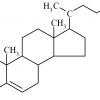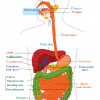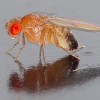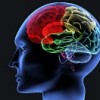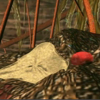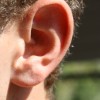Brain size and intelligence- why a human is smarter than a mouse

“Section through the cerebral cortex of a mouse, stem cells can be seen glowing in green, mature nerve cells in red; cell nuclei for both types of cell are shown in blue.” Source: IMBA
Your brain is a complex, highly organized organ. Each mammalian brain is made of approximately 10-15 billion nerve cells, called neurons. And each brain is built of thousands of different types of neurons, called neuronal subtypes. Neurons have the amazing ability to gather and transmit electrochemical signals, the more neurons the faster signals can be transmitted; think of them like the gates and wires in a computer. It has been known that neurons arise from a small set of progenitor cells that divide in a spatially and temporally controlled manner to generate a fully functional adult cortex. However what drives daughter cells of these progenitors to different fates is poorly understood.
So the more nerve cells a brain is able to make, the smarter an organism should be. Turns out that humans are really good at it! Stem cells in the human brain produce far more nerve cells than corresponding cells in mice. Jürgen Knoblich and his research team at the Vienna Institute of Molecular Biotechnology of the Austrian Academy of Sciences (IMBA) found out what mechanisms are responsible, and why the orientation of the cells plays a role.
It is understood that although the genes of mice and humans are more than a 90% alike, the cerebral cortex of a mouse has around eight million neurons while in humans there are more than 10-15 billion. Nerve cells are produced in the brain of the embryo from stem cells that continuously divide. Each dividing stem cell gives rise to a nerve cell and another stem cell. So how could it be that humans have more neurons – and a much larger brain – than mice? The Knoblich laboratory suggests that it has to do with controlling the direction of cell division.
Generally spoken each stem cell can divide in different spatial planes (or directions); the daughter cells are then either ‘up and down’ or ‘left and right.’ According to current understanding the direction of division of stem cells defines whether new nerve cells, or only new stem cells, are produced. This is called a positional effect.
The IMBA scientists bred mice in which the direction of division of the stem cells can be controlled. This regulation is possible by using the protein ‘Inscuteable,’ which works like a switch for the direction of division: cells divide horizontally with Inscuteable but vertically without the protein.
Studies of the mice with Inscuteable showed that nerve cells are actually generated in both vertical and horizontal divisions (and not only in one); however the cells were far more parallel to the cell surface. So a mouse with more Inscuteable protein has more horizontal divisions, and so overall more nerve cells. A lack of Inscuteable has the opposite effect. This mechanism could be responsible for the tremendous proliferation of nerve cells in the human brain!
But how does a human brain manage to generate the correct numbers of neurons?
Higher organisms like humans reproduce nerve cells through a ‘detour,’ meaning horizontal division initially creating a stem cell and an intermediate progenitor. This cell has lost its stem cell properties but can still divide, on average once in mice, so that two nerve cells are generated per horizontal stem cell division. This indirect neurogenesis is also controlled by the Inscuteable protein.
Indirect neurogenesis seems to be the key to larger and more intelligent brains. If we compare mice to organisms with less developed brains we can see that they are lacking this kind of fast neurogenesis and have accordingly fewer nerve cells. Therefore indirect neurogenesis is a very important in terms of evolution. In humans intermediate progenitors are already much more complex and divide more frequently than in the mouse; therefore compared with mice, humans have a plethora of nerve cells.
The researchers also tried to determine whether the mice without the Inscuteable protein are dumber than their counterparts due to fewer nerve cells, or whether an artificially induced overproduction of the protein could lead to more intelligent animals, but couldn’t prove either hypothesis, yet.
So does the Inscuteable protein make man human? “Far more interesting however is the role played by Inscuteable in humans” says Jürgen Knoblich. “It probably also regulates the number of neurons in our own bodies by activating indirect neurogenesis, the evolution of the protein and its function may have contributed to the enormous enlargement of the human brain.”
This hypothesis is supported by the finding that the division pattern of the intermediate progenitors closely correlates with the level of intelligence. This specific pattern only appears in primates, including humans, so without Inscuteable we would certainly not be what we are.
References:
Mouse Inscuteable Induces Apical-Basal Spindle Orientation to Facilitate Intermediate Progenitor Generation in the Developing Neocortex Maria Pia Postiglione, Christoph Jüschke, Yunli Xie, Gerald A. Haas, Christoforos Charalambous, Juergen A. Knoblich Neuron – 20 October 2011 (Vol. 72, Issue 2, pp. 269-284)
| Print article | This entry was posted by Christine Marizzi on November 13, 2012 at 2:23 pm, and is filed under G2C Online. Follow any responses to this post through RSS 2.0. You can leave a response or trackback from your own site. |



